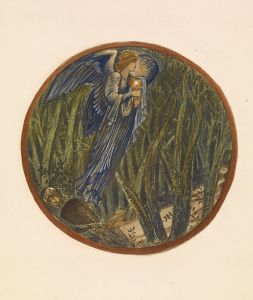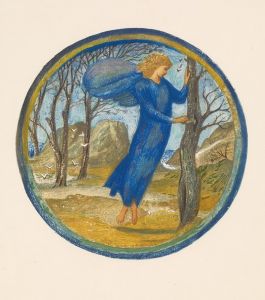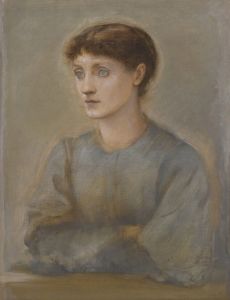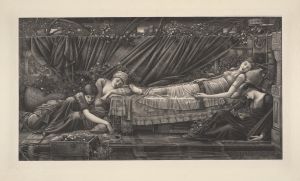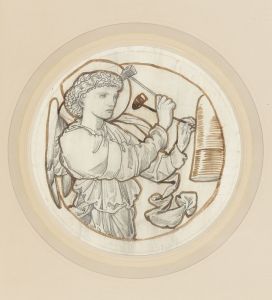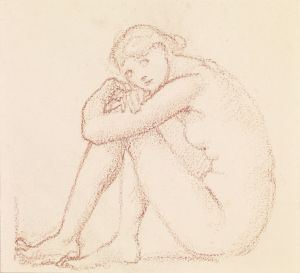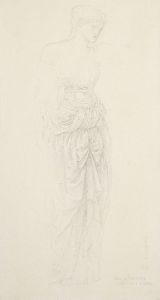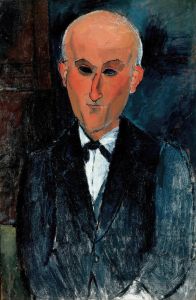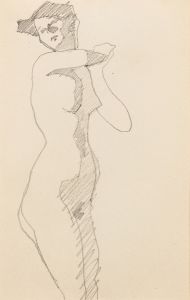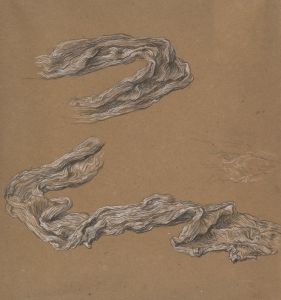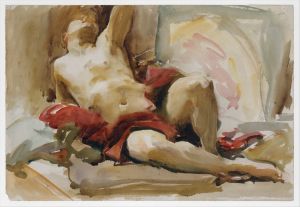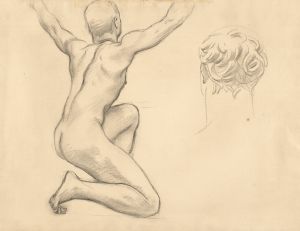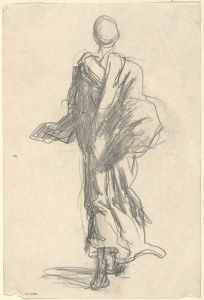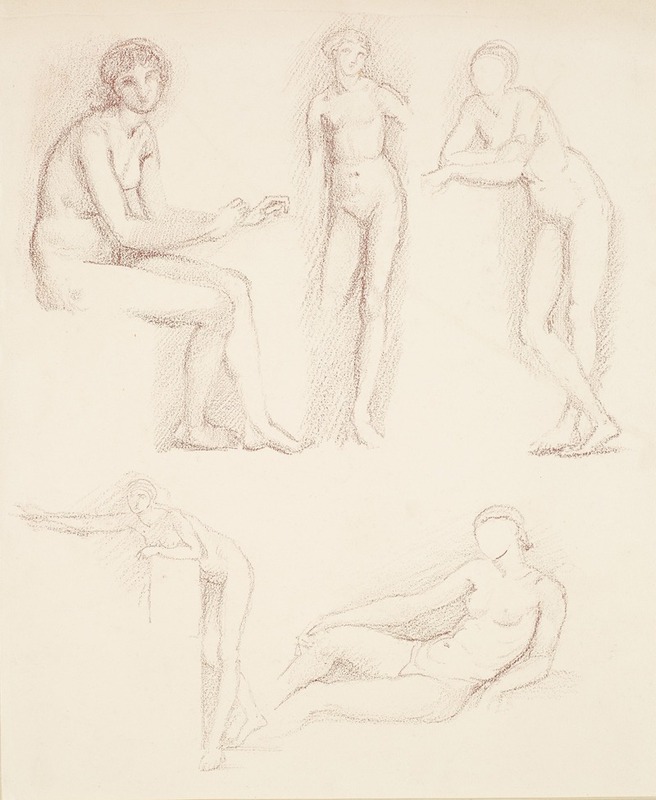
Female Nude – Five Studies
A hand-painted replica of Sir Edward Coley Burne-Jones’s masterpiece Female Nude – Five Studies, meticulously crafted by professional artists to capture the true essence of the original. Each piece is created with museum-quality canvas and rare mineral pigments, carefully painted by experienced artists with delicate brushstrokes and rich, layered colors to perfectly recreate the texture of the original artwork. Unlike machine-printed reproductions, this hand-painted version brings the painting to life, infused with the artist’s emotions and skill in every stroke. Whether for personal collection or home decoration, it instantly elevates the artistic atmosphere of any space.
"Female Nude – Five Studies" is a drawing by the British artist Sir Edward Coley Burne-Jones, a prominent figure in the Pre-Raphaelite Brotherhood, an art movement that emerged in the mid-19th century. This movement sought to return to the detail, intense colors, and complex compositions of pre-Renaissance art. Burne-Jones, known for his romantic and often mystical subjects, was a key figure in this movement, and his works are celebrated for their beauty and emotional depth.
The drawing "Female Nude – Five Studies" showcases Burne-Jones's skill in depicting the human form, a subject he explored extensively throughout his career. The artwork consists of five separate studies of a female nude, each capturing different poses and angles. This piece exemplifies Burne-Jones's dedication to understanding the anatomy and movement of the human body, a common practice among artists of his time who often engaged in life drawing to hone their skills.
Burne-Jones's approach to the female form was influenced by his admiration for classical art and the works of the Italian Renaissance. His studies often reflect a sense of idealized beauty, characterized by elongated figures and graceful lines. This particular drawing, with its focus on the nude form, highlights the artist's interest in exploring themes of beauty and sensuality, while maintaining a sense of modesty and restraint typical of his style.
The medium used for "Female Nude – Five Studies" is likely pencil or chalk on paper, common materials for preliminary sketches and studies during the 19th century. These materials allowed artists to quickly capture the essence of their subjects and experiment with composition and form. Burne-Jones's use of line and shading in this drawing demonstrates his proficiency in creating depth and volume, bringing a sense of life to the figures.
While specific details about the creation date and the model used for "Female Nude – Five Studies" are not well-documented, it is known that Burne-Jones frequently collaborated with models and muses who inspired many of his works. His wife, Georgiana Burne-Jones, and other women in his social circle often served as models for his paintings and drawings, contributing to the ethereal and otherworldly quality of his art.
Burne-Jones's work, including "Female Nude – Five Studies," has been influential in the development of later art movements, such as Symbolism and Art Nouveau. His emphasis on beauty, mythology, and the exploration of the human form continues to resonate with audiences and artists alike.
Today, Burne-Jones's drawings and paintings are held in high regard and can be found in major art collections and museums worldwide. "Female Nude – Five Studies" remains a testament to his skill as a draftsman and his contribution to the Pre-Raphaelite movement, reflecting his enduring legacy in the history of art.





